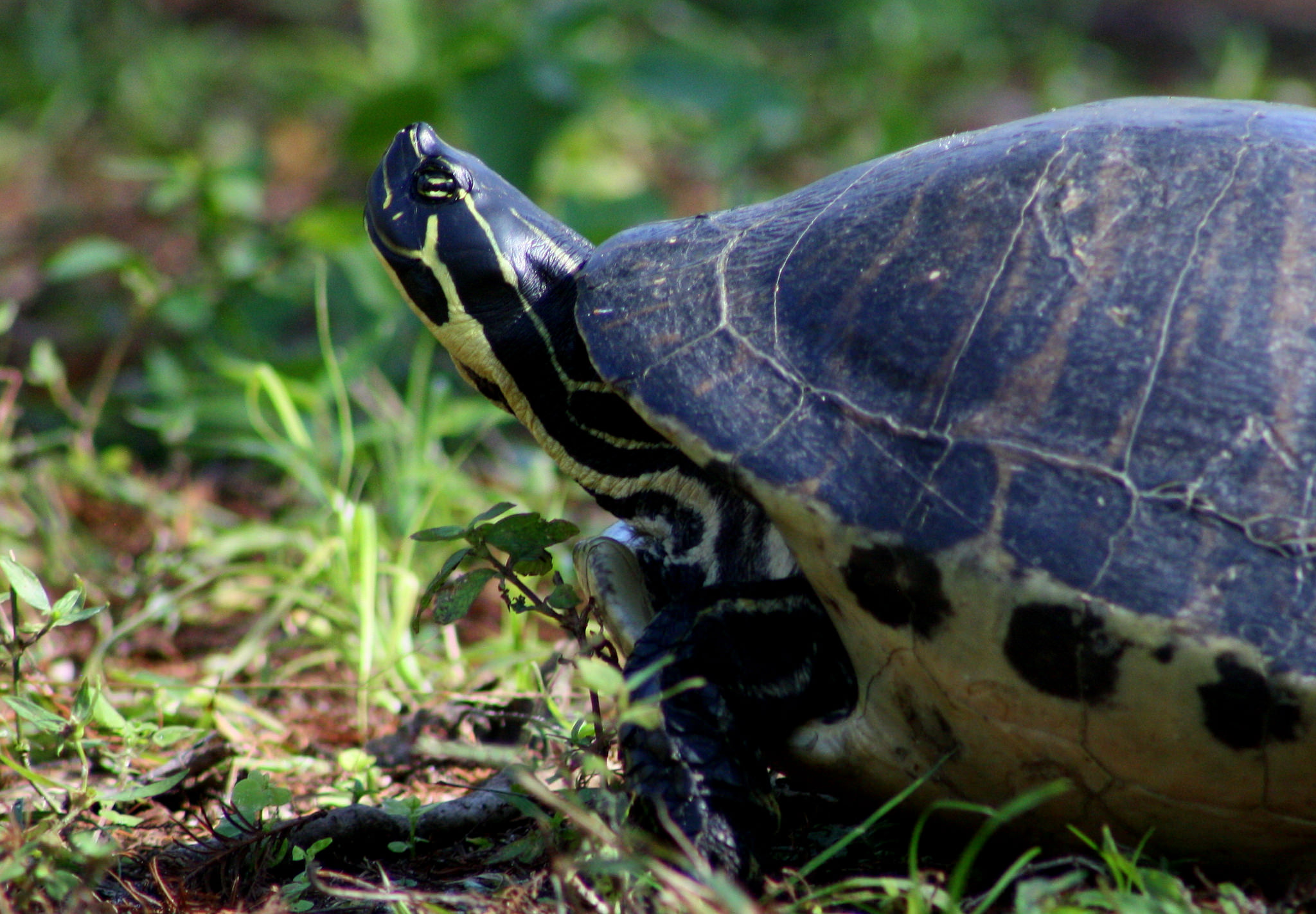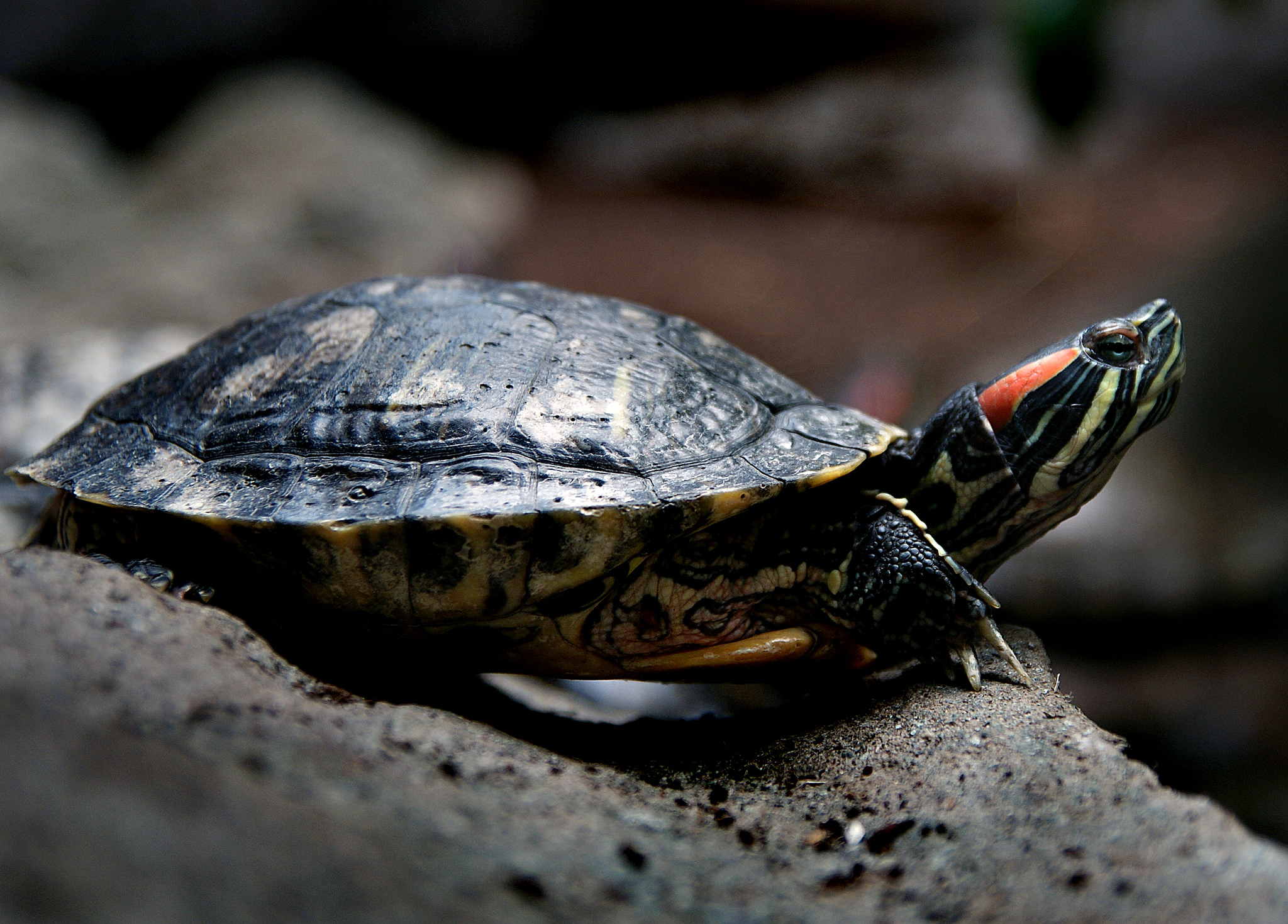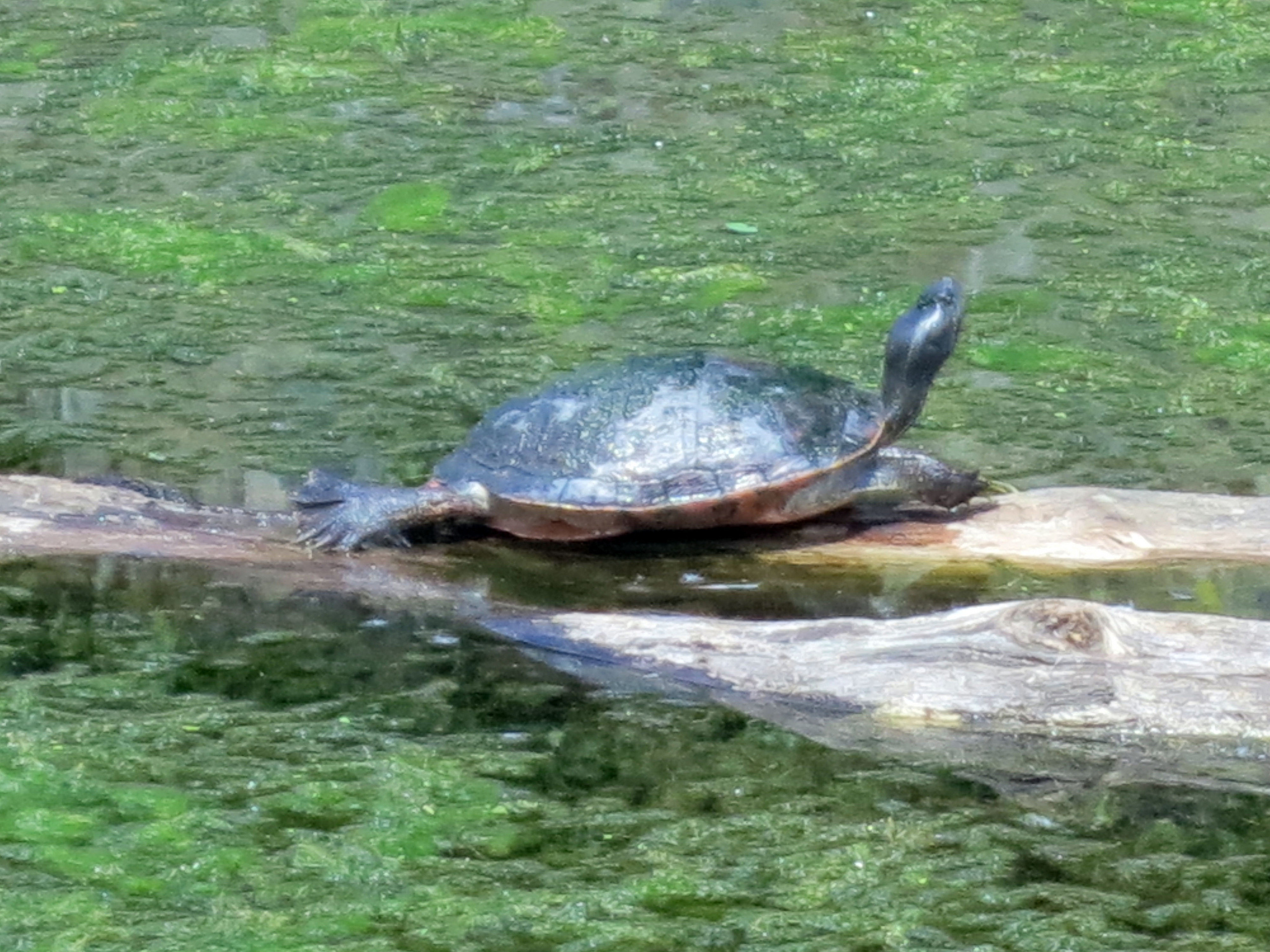Turtles observed most frequently are the yellow-bellied slider and the river cooter. The yellow-bellied slider has a dark highly domed shell or carapace, with, as you can imagine, a yellow belly or plastron. Along the yellow margins or broad edges where the top and bottom shells meet, large black spots give the turtle it’s most visible identifying characteristics. River cooters’ carapaces tend to be flatter than the sliders’ and the belly or plastron tends to be redder.
Both of these turtles’ adult carapaces are domed just enough that an alligator has difficulty crunching through the shell to make a meal of them. That is why you might observe turtles seemingly in harm’s way next to an alligator. An alligator’s flat upper palate, or plate, in the top part of its mouth cannot crack the very sturdy dome or arch (the strongest structure in nature) of the turtle’s carapace. The ribs and vertebrae of the turtles fuse together to form the carapace and plastron and margin. The leg, arm, neck and head bones connect or articulate to the carapace and plastron inside the shell.
True aquatic turtles or terrapins do not have the capacity to withdraw entirely into their shells as some land tortoises can. Eastern box turtles, a true tortoise, can draw in their heads and tails, just not at the same time. Aquatic turtles are referred to as terrapins since their feet can support them on land and help them swim in water. Tortoises or land turtles have feet adapted for life on land. True turtles are sea turtles whose limbs are designed for swimming in the ocean; they serve as paddles or oars. Female sea turtles must lay their eggs in dry sand and their “paddles” are not designed to move them up the beach for their very short time on land to lay their eggs.
Yellow-bellied sliders and river cooters are seen most of the time by paddlers as they haul out on logs to sun. As they sun, they warm up inside and algae that may be growing on their carapaces will be destroyed. On cold days these terrapins are reluctant to re-enter the cold water, so if you are quiet you may be able to pass them by without making them get back in that cold water!
Cathy J. Sakas
The Coastal Naturalist




